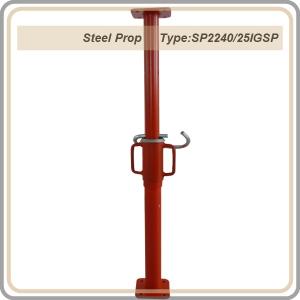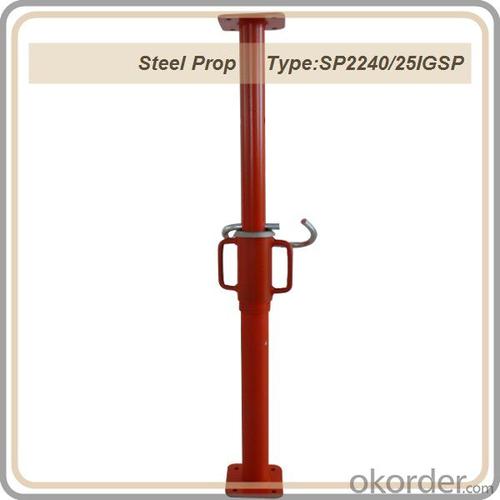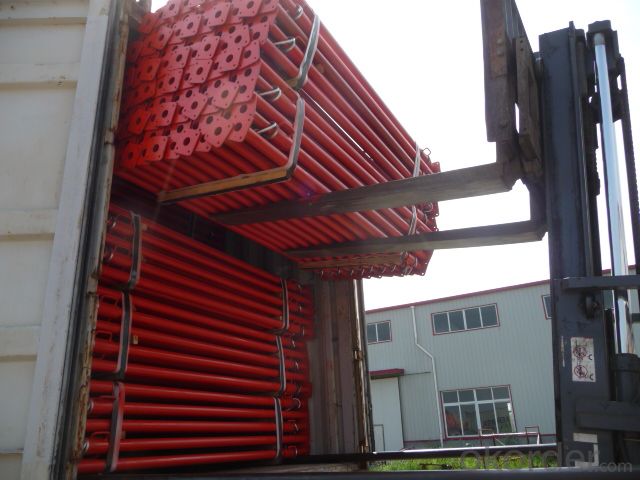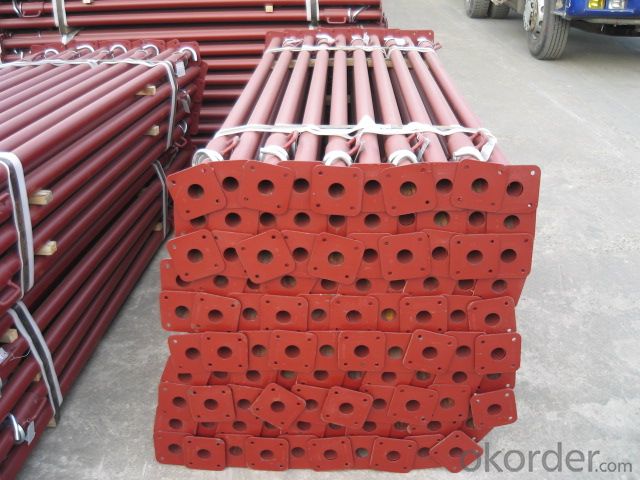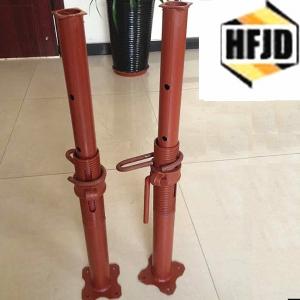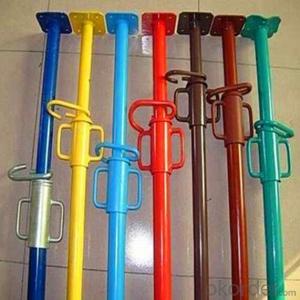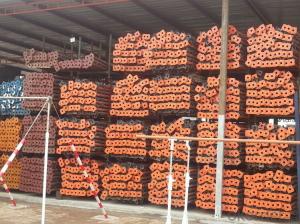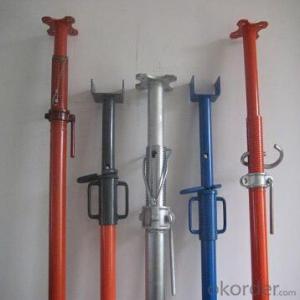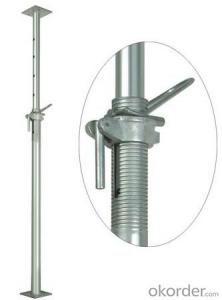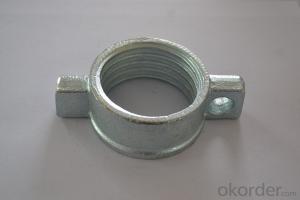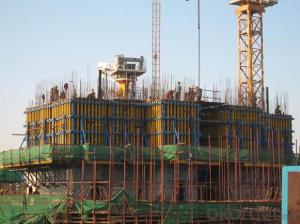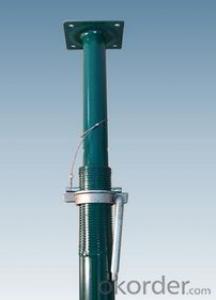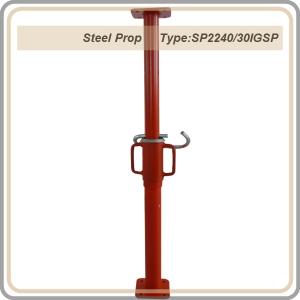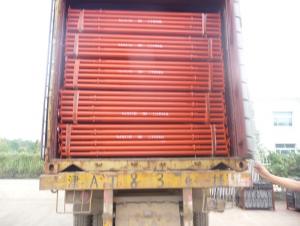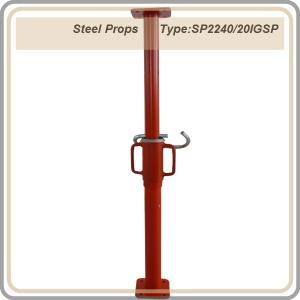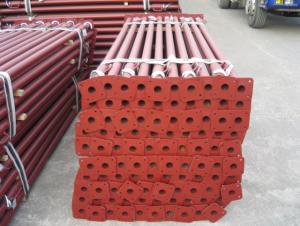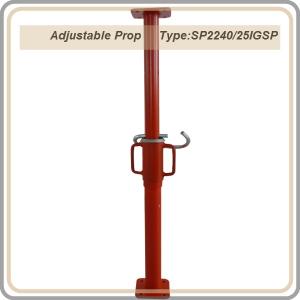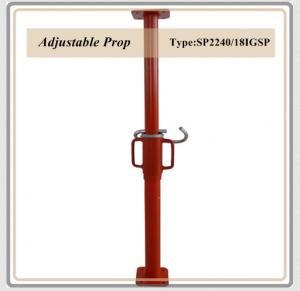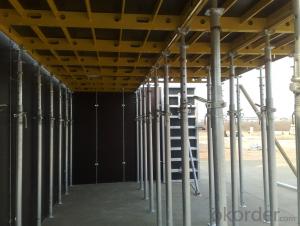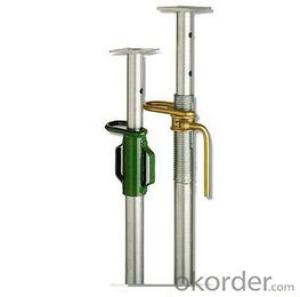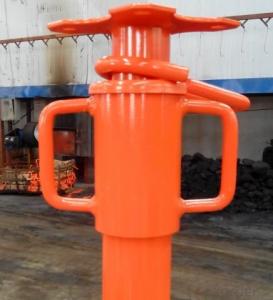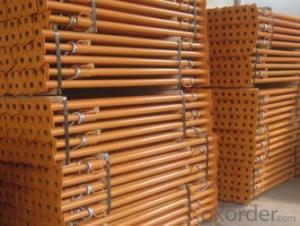Export Steel Props/red color prop 2.2-4M/thickness 2.5mm
- Loading Port:
- China Main Port
- Payment Terms:
- TT or LC
- Min Order Qty:
- 1680 Piece/Pieces 1680pcs / 20'FT container pc
- Supply Capability:
- 10000 pc/month
OKorder Service Pledge
OKorder Financial Service
You Might Also Like
1. Length 2200-4000mm
2. Outer tube diameter 56mm
3. Inner tube diameter 48mm
4. Tube material : Q235
5. Tube thickness : 2.5mm
6. weight : 12.9kgs
7. square plate : 120*120*4mm
8. Italian type nut
9. G-pin 12
10. Painted surface
11. Color : as customer 's request . red / blue / green / orange/ brown
Packaging & Delivery
| Packaging Details: | packaging :50pcs / bale container : 1680pcs / 20ft |
|---|---|
| Delivery Detail: | 20-30days after receive deposit |
Specifications
Adjustable props / construction prop
Height 2.2-4M
Italy type painted props
Adjustable props
Shoring props
Construction scaffold steel prop
Scaffold props
Telescopic steel props
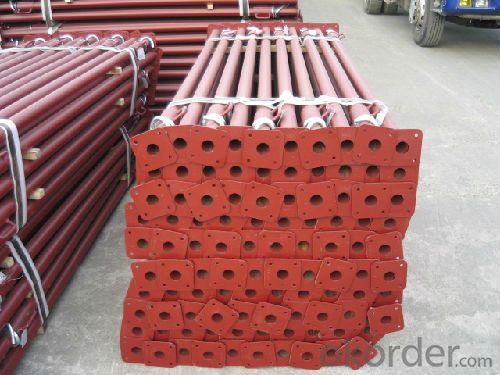
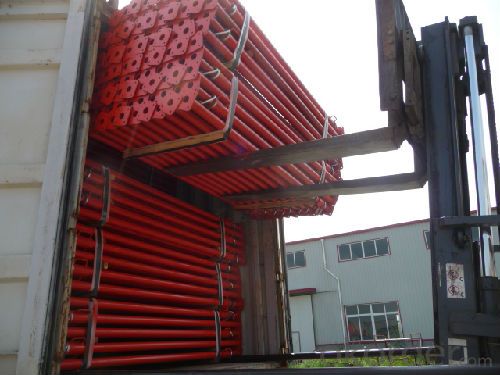
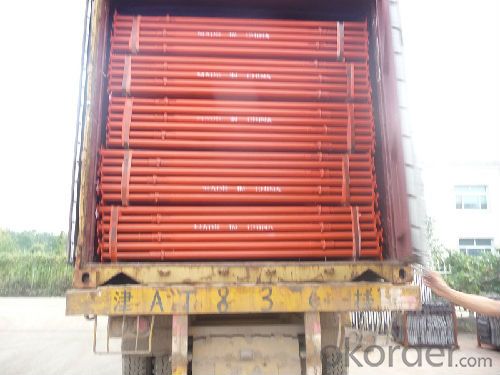
Product introduce
Steel Prop is a labour and time saving device to support shuttering and centering.
It is made outer tube of 60mm (O. D.) & inner pipe of 48mm (O. D.)
or outer tube 56mm (O.D.) & inner pipe 48mm (O.D.) ,
or outer tube 48mm (O.D.) & inner pipe 40 mm (O.D.) moving in each other telescopically.
The surface has painted , powder , electric galvanized and hot dipped galvanized .
The height use of props by double staging is recommended upto 7000mm only .
Top and bottom plate are provided with nail holes for wooden beam or steel beam .
The top has square shape , flower shape or U-head , U-fork head .
U-head can use fix or adjustable .
- Q: What are the advantages of using a steel prop?
- Using a steel prop in construction projects offers numerous benefits. Firstly, steel props are renowned for their exceptional strength and durability. They have the ability to withstand heavy loads and provide reliable support for various structures. This strength ensures the safety of workers and the longevity of the project. Furthermore, steel props possess high adjustability and versatility. They can be easily extended or retracted to fit the required height, making them suitable for a wide range of applications. This flexibility allows for efficient and precise construction, as the props can be adjusted to meet specific project requirements. In addition, steel props offer excellent stability and load-bearing capacity. They provide a solid foundation for different types of structures, guaranteeing stability and preventing any potential collapse or accidents during construction. This stability is particularly crucial for projects involving heavy loads or unique architectural designs. Moreover, steel props are cost-effective. Their durability and reusable nature make them a cost-efficient option, as they can be utilized for multiple projects over an extended period. This reduces the need for frequent replacements or repairs, ultimately saving both time and money. Lastly, steel props are relatively easy to handle and install. They are lightweight and require minimal effort to set up and dismantle, streamlining the construction process and reducing labor costs. This ease of use makes steel props a popular choice among construction professionals. In conclusion, the utilization of steel props in construction projects provides advantages such as strength, adjustability, stability, cost-effectiveness, and ease of use. These qualities make them an excellent choice for ensuring safety, efficiency, and successful completion of various construction projects.
- Q: Can steel props be used for supporting temporary stages or catwalks?
- Temporary stages or catwalks can be supported using steel props. These props, also referred to as adjustable steel props or steel acrow props, are extensively utilized in construction for the purpose of supporting scaffolding systems. Their main function is to offer vertical support and stability to a variety of structures, including temporary stages and catwalks. Thanks to their height-adjustable feature, steel props can be easily set to the desired level to provide the necessary support for the stage or catwalk. Furthermore, steel props are known for their strength and durability, making them capable of handling the weight and load requirements of temporary structures. Consequently, steel props are a reliable and frequently employed choice for supporting temporary stages or catwalks.
- Q: Scaffolding steel pipe support spacing
- Announcement on the publication of industry standard "technical code for safety of steel tubular scaffold with couplers in construction"Now approved the construction of steel tubular scaffolding safety technical specifications for the industry standard, number JGJ 130-2011, since December 1, 2011 implementation. Among them, the first 3.4.3, 6.2.3, 6.3.3, 6.3.5, 6.4.4, 6.6.3, 7.4.2, 7.4.5, 8.1.4, 9.0.1, 9.0.4, 6.6.5, 9.0.5, 9.0.7, 9.0.13, 9.0.14 mandatory provisions,
- Q: Are steel props suitable for use in nuclear power plant construction?
- Yes, steel props are suitable for use in nuclear power plant construction. Steel props offer high strength, stability, and durability, making them an ideal choice for supporting heavy loads and providing structural support in such complex and demanding construction projects. Additionally, steel props can withstand extreme conditions, such as high temperatures and radiation exposure, ensuring the safety and integrity of the nuclear power plant.
- Q: Can steel props be used for temporary support in residential buildings?
- Yes, steel props can be used for temporary support in residential buildings. Steel props are commonly used in construction to provide temporary support during building works, renovations, or repairs. They are adjustable and can bear heavy loads, making them suitable for providing temporary support in residential buildings where additional support is needed.
- Q: Are steel props suitable for use in offshore wind farm construction?
- Steel props are well-suited for use in the construction of offshore wind farms. They are commonly employed in construction projects, including offshore wind farms, due to their robustness, endurance, and adaptability. The construction of offshore wind farms necessitates sturdy and dependable support structures that can withstand harsh weather conditions and provide stability for wind turbines. Steel props possess exceptional load-bearing capacity and can endure the dynamic forces exerted by wind and waves. Furthermore, steel is resistant to corrosion, a vital characteristic in the offshore environment where exposure to saltwater and moisture is high. Additionally, steel props can be easily modified and tailored to meet specific project requirements, making them highly flexible for various offshore wind farm designs. All in all, steel props are a suitable choice for offshore wind farm construction due to their strength, endurance, resistance to corrosion, and adaptability.
- Q: What are the common maintenance tasks for steel props?
- To ensure the steel props are well-maintained, it is necessary to regularly clean and inspect them, lubricate the moving parts, and address any signs of damage or wear. To maintain the steel props in good condition, it is crucial to regularly clean them. This involves eliminating dirt, dust, and debris from the surface of the props. To accomplish this, a mild detergent or cleaning solution can be applied using a soft cloth or brush. It is important to avoid using abrasive materials or harsh chemicals that could harm the steel. Another essential maintenance task for steel props is inspection. This should be done regularly to detect any signs of damage or wear. Checking for rust, cracks, or bent parts is crucial to ensure the safety and functionality of the props. If any issues are found, the props should be repaired or replaced as necessary. Lubricating the moving parts of the steel props is also necessary. Hinges and joints may need to be lubricated to ensure smooth operation. The use of a suitable lubricant, such as oil or grease, will prevent friction and maintain the props' performance. Additionally, it is important to adhere to the manufacturer's guidelines for maintenance and care. These guidelines may include specific instructions for cleaning, lubrication, and storage. By following these guidelines, the lifespan of the steel props can be prolonged, and their safe and efficient use can be ensured.
- Q: Can steel props be used for temporary support in wastewater treatment plants?
- Yes, steel props can be used for temporary support in wastewater treatment plants. Steel props are commonly used in construction and engineering projects to provide temporary support to structures during construction or maintenance. In wastewater treatment plants, steel props can be used to support various components such as pipes, tanks, and equipment that need to be temporarily lifted or held in place for maintenance, repairs, or modifications. The use of steel props allows for flexibility and stability during these processes, ensuring the safety and efficiency of the wastewater treatment plant operations. It is important to ensure that the steel props used are of appropriate size, strength, and quality to withstand the specific load requirements and environmental conditions of the wastewater treatment plant. Regular inspections and monitoring of the steel props are also crucial to identify any signs of wear, damage, or corrosion, and take necessary actions to maintain their integrity and reliability.
- Q: Can steel props be used in the installation of temporary seating or bleachers?
- Yes, steel props can be used in the installation of temporary seating or bleachers. Steel props provide strong structural support and stability, making them suitable for temporary seating or bleacher installations. They can be easily adjusted to the required height and provide a secure foundation for the seating or bleacher structure.
- Q: How do you calculate the required spacing between steel props?
- Calculating the required spacing between steel props involves considering several factors to ensure the safe and efficient support of a structure. Here are the key steps involved in this calculation: 1. Determine the load: Start by determining the load that the steel props need to support. This includes the weight of the structure, any additional live loads, and any concentrated loads that may be present. 2. Determine the load-bearing capacity of the props: Next, assess the load-bearing capacity of the steel props being used. This information can typically be obtained from the manufacturer's specifications or load tables. It is important to consider both the maximum axial load and the maximum moment capacity of the props. 3. Calculate the total load on each prop: Divide the total load by the number of props to determine the load that each individual prop needs to support. Ensure that the individual prop load does not exceed the load-bearing capacity of the props. 4. Consider the spacing limitations: Determine any spacing limitations based on the specific requirements of the project or the manufacturer's guidelines. These may include maximum and minimum spacing requirements, which could be influenced by factors such as the prop's length, stability, or bracing requirements. 5. Account for the prop's deflection: Steel props will deflect under load, and this deflection must be taken into account when calculating the spacing. Typically, a maximum allowable deflection limit is provided by the manufacturer. Ensure that the spacing is such that the deflection of each prop remains within this limit. 6. Calculate the required spacing: Divide the maximum allowable deflection by the deflection of each prop under load to determine the number of props needed to achieve the desired spacing. It is important to ensure that the resulting number of props is practical and feasible within the given project constraints. 7. Consider additional factors: Finally, consider any additional factors that may impact the spacing calculation, such as wind loads, seismic loads, or any other relevant design considerations. These factors may require adjustments to the spacing calculation to ensure the stability and safety of the structure. It is crucial to consult with a structural engineer or a qualified professional during the calculation process to ensure accuracy and adherence to safety standards and local building codes.
Send your message to us
Export Steel Props/red color prop 2.2-4M/thickness 2.5mm
- Loading Port:
- China Main Port
- Payment Terms:
- TT or LC
- Min Order Qty:
- 1680 Piece/Pieces 1680pcs / 20'FT container pc
- Supply Capability:
- 10000 pc/month
OKorder Service Pledge
OKorder Financial Service
Similar products
Hot products
Hot Searches
Related keywords
